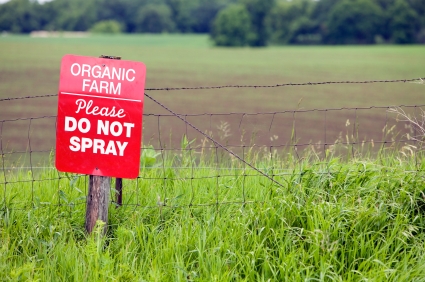Just when we think we’re on the right path toward a healthy lifestyle, someone puts up a “detour” sign. With regard to food and our diets, for example, many roads headed for supermarkets often traverse through a fog of unhealthy chemicals. These are vicious enemies that infiltrate and contaminate natural foods. They can potentially lead to disastrous health issues down the road.
Which foods are most at risk to contain pesticides? Ironically (because we’ve been told since childhood to eat as many of these as possible!), the answer is “fruits and vegetables.” It’s estimated that roughly half of the fruits and vegetables tested have pesticide residues on or in them. Approximately 40 percent have multiple residues.
Those who use pesticides often underestimate their intended environmental impact. Over 98 percent of sprayed insecticides, according to research, reach unintended destinations. Additionally, 95 percent of herbicides have the same issue. Certainly, pesticides are beneficial for their intended purposes, but inappropriate use can have harmful results. Tests indicate that prolonged exposure to pesticides, for example, raises the risk of certain cancers and contributes to neurological problems such as Alzheimer’s and Parkinson’s diseases. It may also possibly lead to developmental problems. Pesticides can even weaken our immune systems, which could increase our chances of disease.
In general, the list of foods most at risk for pesticides includes tree fruits, berries, and leafy greens. Fruits and vegetables with thick skins that are removed before eating—such as melons, avocado, corn, etc.—tend to have the lowest amounts of pesticide residue.
Here’s a little good news: Wheat and bread and other grain products, with a few exceptions, tend not to have pesticide residues. This is primarily because milling often removes them, and most grains are treated with herbicides that are sprayed well before their harvested edible parts are formed.
Experts suggest that eating a diverse diet can minimize our exposure to pesticides. The more varied our food, the less exposure we have to any given pesticide. We should include a substantial amount of properly washed and peeled fruits and vegetables in our diets. Careful storage and handling of fresh food also will limit exposure to bacteria and harmful residues. To avoid pesticides, buy fresh and/or processed organic foods. Remember to support the stores and growers who offer them.
Buying organic is preferable, of course, not only for the health of the earth and farm workers. It’s also beneficial for your family. As with many these days, however, if your budget doesn’t allow the added expense of buying organic, be sure to research the safer, acceptable foods.
It’s obviously best to buy all organic when possible. However, here are a few foods I encourage a “no scrimp on price” outlook for (The Dirty Dozen). The Dirty Dozen is a list of 12 foods you’ll want to consume organically. Those foods include apples, celery, strawberries, peaches, spinach, nectarines (imported), grapes (imported), sweet bell peppers, potatoes, blueberries, lettuce, kale, collard greens, fatty meats, milk, coffee, wine, and chocolate.



